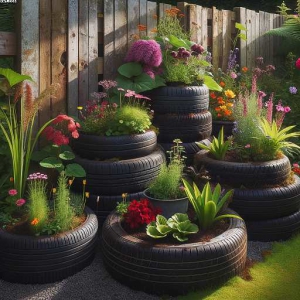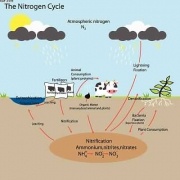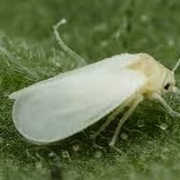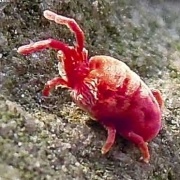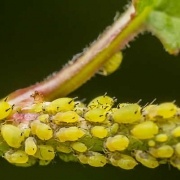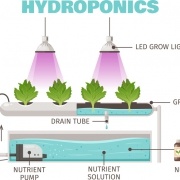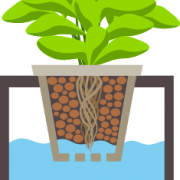Plant Pests-Starting With Aphids
Plant Pests-Starting With Aphids
There is no doubt about it that whatever and wherever you grow your plants then sooner or later you will be confronted by these little pasty guys! The dreaded aphids. In fact I have just sprayed some early clusters appearing on my greenhouse on the citrus trees. So, this prompted me to start a series of blog posts about pests and some of the best ways to control them.
What are Aphids ?
Well these little guys are small insects of differing colours. They can be seen in green (the popular I think) grey, black, red, yellow and a few other colour. The bodies are mainly pear shaped and they hang out in clusters of differing sizes depending on how long they are aloud to live. Of course its always a bit disheartening when you spot your fist Aphid outbreak! Especially when you are new to growing plants.
These little horrors can be found on most type of plant both in doors and outside. I our part of the world here in West Yorkshire the aphids are generally know by there colour. So, the green ones are known as “green flies” and the black and grey ones as “black flies”. Importantly though they are all aphids and require controlling in the same way.
So, usually the first sign of an outbreak will be spotted on “new growth leaves”. Aphids will live on the underside of new leaves and suck at the juices of the plant. Both indoor and outdoor plants can be affected, so a close watch should be a part of your plants maintenance. At first the aphids dont seam to have much affect on your young plant leaves. However a bad infestation will lead to the plant leaves dropping off, usually turning yellow first.
Aphids can spread diseases
Aphids can be a huge problem on certain crops. Of course we have all seen the shiny sticky substance they the give off. This is known as “Honeydew”. This sweet excretion is a food of other insects such as ants. Ants will often farm the aphids for their honeydew Thus perhaps causing other problems for the discerning gardener. So, another problem that can manifest itself is that the honeydew is also a food source for moulds. These moulds can often be seen on plants that have not been treated for the aphid infestation. They look unsightly and should be treated as soo as possible. All these things should be part of the plant growers hygiene practises and not neglected. Once you spot aphids then action must be taken ASAP.
Aphids give live birth
Of course this is why these little pests can multiply so quickly. Female aphids give birth to live young. So, as soon they are born then the young aphids are able to start the assault on your plants. After four moulting’s of a white coloured skin then these little guys can start producing more offspring’s. Fundamentally, increasing the size of the infestation with an aphid population explosion. This is why early vigilance and intervention is required by the plant grower, indoors or outdoors. If you see an early outbreak then attack it.
So, the young aphids are known as “nymphs”. This is common in the insect world. The nymphs look very much like the adult insects and can cause the same amount of plant damage accordingly. Aphids can easily spread their colonies to other parts of the plant or garden. This is done by some of the adults having wings. These adults emerge when the local colony is getting too large to sustain.
Aphids natural predators
Like most of the world of natural history then there are natural balances to help eradicate these aphid pests and the powdery mildew that follows. . Of course the most people know of the most popular aphid eater , the “ladybird) or “ladybug ” as it is called in the USA. These predators are a member of the beetles family. In my opinion then the ladybird is a common and welcome site to the regular outdoor gardener. These bright coloured flying beetles are a welcome site and come in any forms and colours. The most common been bright red with black spots.
Ladybirds arrive on this planet in four stages, Firstly the eggs are laid on wild plants such as nettles. The eggs hatch into a larva and quickly develop into the pups and then the adult ladybird emerges into the bright red and yellow dotted beetle that we all recognise. Clusters of up to forty eggs can be seen on the leaves of nettles and other wild plants. Consequently these eggs hatch in about four to ten days.
Ladybirds can be seen hibernating around garden sheds and even in houses. Emerging in spring and soon starting their life cycle over again. These beetle are rampant feeders of aphids and can eat as many as 5,000 aphids in a year.
Here in the UK ladybirds are available to buy. Adults or larvae are available between the months of April to August. Another good organic way of aphid control is from “Neem Oil” . This treatment is derived from the seeds of the tropical “Neem Tree” and can be used as an insecticide and other things such as, aphids, spidermites, mealybugs, and scale. It also controls diseases, such as powdery mildew. This is a beneficial product to have handy for your plants and is available from Hydrostore online.
